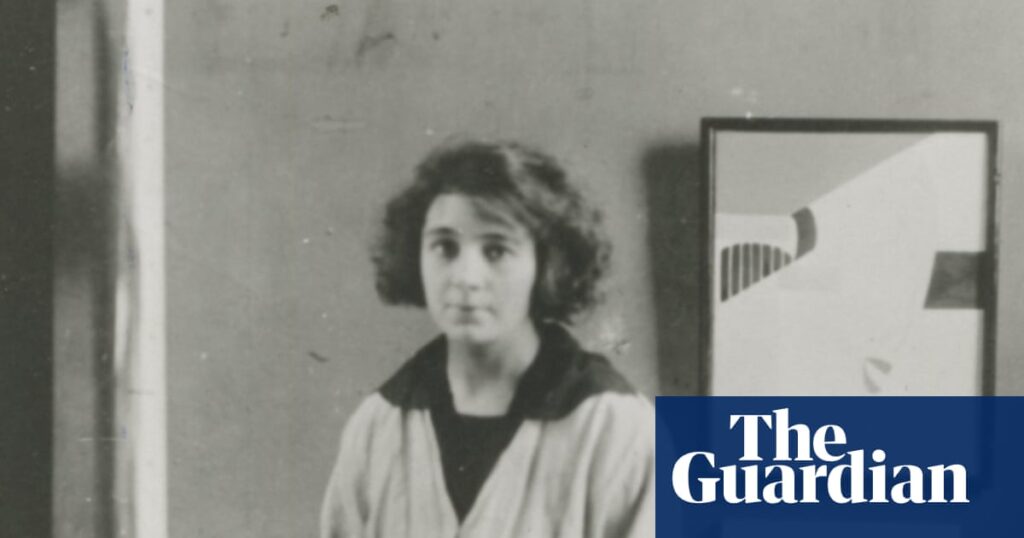In the turbulent years after the first world war when artistic experiment flourished, critics were intrigued by the mysteriously named modernist Tour Donas. “There is a kind of charm in Tour Donas’s work that we are not accustomed to seeing in painters of his school,” wrote one, “a kind of gentle timidity that seems to reveal a feminine sensitivity.” His work, was in fact, her work; namely Marthe Donas, a Belgian who had taken a gender-neutral name to get on in the male-dominated art world.
As Tour Donas, Marthe enjoyed a brief but dazzling career, before falling into obscurity. Now the city of her birth, Antwerp, is hosting a major exhibition to place her in the modernist pantheon, alongside Piet Mondrian, Amedeo Modigliani and Alexander Archipenko, the Ukrainian sculptor who was her mentor, as well as romantic and creative partner.
The exhibition, which opens on Saturday at the Royal Museum of Fine Arts (KMSKA) in Antwerp, showcases 55 of her works, from cubist paintings in warm colours, shimmering impressions of textiles, to flatter abstract pieces. Donas is in the company of Archipenko and La Section d’Or, a pan-European association of artist and writers, who aspired to promote modernism without cliques or manifestos.
The show reveals a different side to modernism, neither shocking like Marcel Duchamp’s urinal nor stark like Kazimir Malevich’s black square. For Donas and Archipenko, “a sense of abstraction goes hand in hand with elegance”, the curator Adriaan Gonnissen said. “There is a real drive for renewal, for innovation … but there is also this incredible thirst, a hunger for classical beauty.”
Unlike Duchamp or Jackson Pollock, La Section d’Or were not radicals, Gonnissen said.
One of the most prized works on display is The Dance, which Donas painted in 1918-19. The work was considered lost, until discovered in Japan in preparation for this exhibition.
Donas was born in 1885 to a well-to-do French-speaking family in Antwerp. Her grandfather had been a realist painter, but Donas’s father was not keen on his daughter following this path; he removed her from art school in 1902 after a month.
A decade later Donas enrolled again, determined to be an artist, after a life-changing accident. She fell off a roof while trying to catch a glimpse of King Albert I, who was visiting Antwerp, smashing through a glass ceiling on her way down. Her studies were then interrupted by the German invasion of 1914. While her family fled to the Netherlands, Marthe went to Dublin, where she enrolled in art school and learned how to make stained glass. After a spell in Paris, which was pivotal for her art but drained her savings, she went to the French Riviera as a drawing instructor to a rich lady.
Donas met Archipenko in Nice in 1917. The pair soon clicked. He described her as “my best student” and began to promote her work. Donas created her shaped paintings, works that shunned traditional rectangles for uniquely shaped pictures that highlighted their cubist distortions.
While modern shaped paintings are often attributed to the Hungarian artist Peter László Péri, Gonnissen believes Donas was the first of her generation to pioneer this “totally different art form”.
But her contribution was overlooked. At the time, cubism and abstract art were seen as male preserves; too intellectual, too rational, for sensitive women.
More than a century later, Donas is slowly gaining recognition. KMSKA, which reopened in 2022 after a far-reaching renovation, wants to promote female artists in the collection. Before the revamp, the museum had only one of Donas’s works, which was not always on display.
The exhibition reflects a growing movement to recover long-neglected female masters, such as the Italian baroque artist Artemisia Gentileschi or her near contemporary from the southern Netherlands, Michaelina Wautier. Other exhibitions have brought out of dusty storerooms the works of the American impressionist Mary Cassatt and the Spanish modernist Maruja Mallo.
Peter Pauwels, an art historian, has spent two decades trying to bring attention to Donas, who he admires for “the elegance, the colours, the originality and the beauty” of her work. A specialist in Belgian modernism, Pauwels knew Donas’s work because his grandparents collected it, but she was otherwise unknown in the Flemish art world 20 years ago. A co-curator of the exhibition, Pauwels criticises the condescension of Donas’s contemporaries. She wasn’t “a young pupil” when she met Archipenko, but a 32-year-old artist in her own right, he said.
The relationship between Donas and Archipenko had ended by mid-1921. Donas married and moved to the Walloon countryside; Archipenko emigrated to America. Then Donas dropped off the artistic map for two decades from the late 1920s, after she unexpectedly became a mother aged 45. Decades later, Donas played down the connection with Archipenko, claiming she had only spent “a few months working at the sculptor’s studio”.
This exhibition reveals a much more intense creative spark. It ends with two works: a composition by Donas that appears to have been inspired by an Archipenko sculpture she kept after the break-up. The vivid colours and curves of the two works are in harmony, but Pauwels said “she does something of her own, she never copied”.
-
Donas, Archipenko & La Section d’Or. Enchanting Modernism is at the Royal Museum of Fine Arts in Antwerp (KMSKA) until 11 January 2026.

